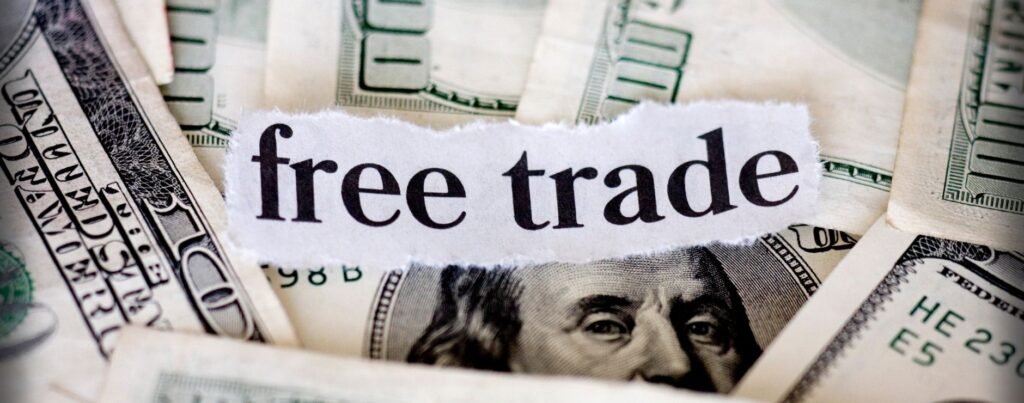
Negotiations on the Comprehensive Economic Cooperation Agreement (CECA) between Australia and India will start again after the suspension in 2015. New Trade Minister of Australia, Dan Tehan, said that a trade agreement with India will be one of his highest priorities.
Why were negotiations stopped in the first place? And now has something changed to make a deal more probable?
For both countries, there are potential gains. The initial joint feasibility study identified major tariff and non-tariff obstacles to trade in goods and services. It evaluated the welfare potential of the agreement as 0.15–1,1% of India’s GDP and 0.23–1.17% of Australia’s GDP.
Australia’s India Economic Strategy has identified 10 priority areas for growing trade with India: an educational sector, three lead sectors (Agriculture, Resources, and Tourism), and six promising sectors. The economic strategy (energy, health, financial services, infrastructure, sport, and science).
The Australia Economic Strategy recently released by India identifies substantial room for growth in exports and investment in 12 focus areas and eight emerging industries.
However, after nine rounds covering many of the chapters proposed between 2011-2015, negotiations have been suspended.
Agricultural exports from Australia have been a sticking point for India. Anything that threatens producers is political dynamite, with half India’s employment linked to agriculture. Australia has fallen on deaf ears because of Australia’s argument that many of its agriculture exports aim toward the premium market end and not to displace Indian small-holder production. In other sectors, where India’s largest corporation feels threats to increased competition on the market and is struggling to defend its privileged status, similar momentum is involved. In general, the benefits to domestic producers and not to consumers are assessed on proposed trade agreements.
India has deep roots of its suspicion for trade, which extends back to the colonial theft of India’s wealth by the United Kingdom, which has (wrongly) been justified as free trade. Commerce is often framed by winning or losing. India’s trade deficit of around $15 billion (US$12 billion) means that trade is considered to be heavily skewered by Australia’s favor. ASEAN, South Korea, and Japan trading agreements have exacerbated India’s trade deficit.
For Australia, India’s desire for a more relaxed visa regime for Indian workers was one of the most politically sensitive points. Other concerns have been raised including parasite threats to imported mangoes and their impact on the processing of steel and food. Overall, it wasn’t enough to make an agreement worthwhile for India. The diplomatic description in 2018 states that ‘negotiating positions are too distant to be a realistic objective in the short term for the conclusion of a CECA.
Australia focused after talks were stopped on ensuring that India remained on the road to reaching an agreement for trade with the CECA in negotiations for the Regional Comprehensive Economic Partnership (RCEP).
What’s new in today’s world?
The most significant change is in the context of the Australia–India relationship as a whole. At the Leaders’ Virtual Summit in June 2020, India and Australia elevated their relationship to a Comprehensive Strategic Partnership, owing in part to concerns about China.
While India may wish to wean Australia away from what it sees as an unhealthy reliance on China, it is unlikely to make commercial concessions in exchange for greater security. Given its domestic politics, India’s capacity for maneuvering is limited, as recent farm protests demonstrate, and it’s unlikely to invest political capital in an agreement that isn’t perceived as hugely beneficial to Indian business.
The fact that India is considering resuming trade talks with the United States and the European Union, which were suspended in 2013, suggests a shift in its trade policy. Reforms to cut red tape have improved the country’s ease of doing the business score, and initiatives to attract foreign investment have been implemented.
However, India’s withdrawal from the RCEP implies that concerns about trade imbalances and unemployment remain, with industry and trade associations acting as roadblocks. While others argue for a different approach to trade agreements, this is still a minority viewpoint.
Because of China’s limitations on exports worth at least AU$20 billion (US$15.4 billion), Australia’s government is under pressure to increase export market diversification. After nine rounds of negotiations, the Australia–EU Free Trade Agreement is the only one that is close to completion.
Negotiations for a UK–Australia agreement have only recently commenced, while feasibility studies are underway in Israel, Switzerland, and other countries.
With both governments eager to show that they are doing something to help struggling economies, even resuming negotiations may be politically advantageous. Despite being announced in June, no conversations have yet taken place, so there may be no rush to put in the hard yards to reach an agreement.
What’s on the table now may not be much better than what was on the table in 2015, but Australia and India may be more inclined to accept it. The most appealing alternative would be a modest agreement with mostly symbolic value, albeit this would be painful for Australia’s trade negotiators.
Those that desire to strengthen their economic ties may explore alternatives to a formal agreement.




